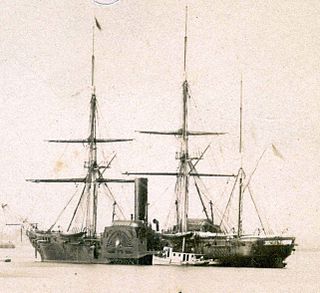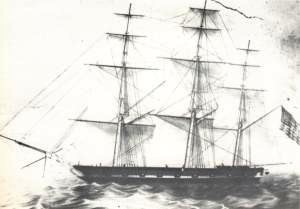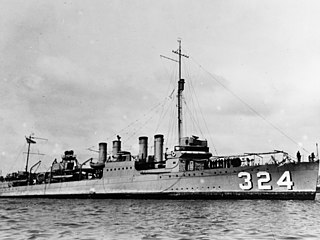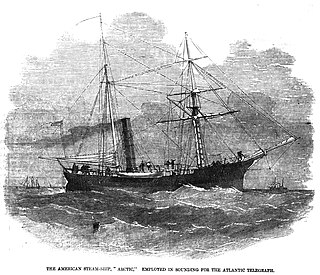USS Madison may refer to the following ships of the United States Navy:

USS James Madison (SSBN-627), the lead ship of her class of ballistic missile submarine, was the second ship of the United States Navy to be named for Founding Father James Madison (1751–1836), the fourth President of the United States (1809–1817).

USS John C. Calhoun (SSBN-630), a James Madison-class fleet ballistic missile submarine, was the only ship of the United States Navy to be named for John C. Calhoun (1782–1850), the Democratic legislator and statesman.

USS Lynx, a 6-gun Baltimore Clipper rigged schooner, was built for the United States Navy by James Owner of Georgetown, Washington, D.C., in 1814, intended for service in one of the two raiding squadrons being built as part of President James Madison's administration’s plan to establish a more effective Navy, one capable not only of breaking the British naval blockade, but also of raising havoc with the British merchant marine.

William Harwar Parker was an officer in the United States Navy and later in the Confederate States Navy. His autobiography, entitled Recollections of a Naval Officer 1841–1865, provides a unique insight into the United States Navy of the mid-19th century during an era when the Age of Sail was coming to an end and the advent of steam power and ironclads was beginning.

USS Susquehanna, a sidewheel steam frigate, was the first ship of the United States Navy to be named for the Susquehanna River, which rises in Lake Otsego in central New York and flows across Pennsylvania and the northeast corner of Maryland emptying into the Chesapeake Bay.

The second USS Porpoise was a 224-ton Dolphin-class brigantine. Porpoise was later re-rigged as a brig. She was based on the same plans as Dolphin.

The third USS Water Witch was a wooden-hulled, sidewheel gunboat in the United States Navy during the American Civil War. She is best known as the ship fired on by Paraguay in 1855. In 1864 she was captured by the Confederate States Navy, and subsequently was taken into that Navy as CSS Water Witch.
The first USS Relief was a supply ship in the United States Navy.
Two ships of the United States Navy have been named USS James Madison, after James Madison the fourth President of the United States:

Elisha Kent Kane was a United States Navy medical officer and Arctic explorer. He served as assistant surgeon during Caleb Cushing's journey to China to negotiate the Treaty of Wangxia and in the Africa Squadron. He was assigned as a special envoy to the United States Army during the Mexican–American War and as a surveyor in the U.S. Coast Survey.

USS Preble was a United States Navy sloop-of-war with 16 guns, built by the Portsmouth Navy Yard, Kittery, Maine, launched June 13, 1839 and commissioned in 1840. She was named after Commodore Edward Preble (1761–1807).

USS Robert Smith (DD-324) was a Clemson-class destroyer in service with the United States Navy from 1921 to 1930. She was scrapped in 1931.

The East India Squadron, or East Indies Squadron, was a squadron of American ships which existed in the nineteenth century, it focused on protecting American interests in the Far East while the Pacific Squadron concentrated on the western coasts of the Americas and in the South Pacific Ocean. Part of the duties of this squadron was serving with the Yangtze River Patrol in China. The East India Squadron was established in 1835 and existed until it became part of the Asiatic Squadron in 1868.

USS Refuge (AH-11), was a hospital ship of the United States Navy during World War II. The ship was built in 1921 by the New York Shipbuilding Corp., of Camden, New Jersey, as SS Blue Hen State, but was renamed President Garfield in 1923 and then SS President Madison in 1940 for service with American President Lines. Acquired by the Navy from the War Shipping Administration on 11 April 1942 the ship was commissioned as the transport USS Kenmore until conversion to a hospital ship.
USS Wyandotte, originally USS Western Port, was a steamer acquired by the Navy as a gunboat for the Paraguay expedition in 1858. When the crisis of the American Civil War occurred, she operated in support of the Union Navy blockade of Confederate waterways.
USS Fenimore Cooper was a United States Navy schooner assigned as a ship’s tender to accompany a surveying expedition. After departing from Hampton Roads, Virginia, and navigating the Cape of Good Hope, the expedition traveled throughout the Pacific Ocean accumulating hydrographic information from the South China Sea to the Bering Strait in the Arctic and Alaska.

The first USS Arctic was a steamer in commission in the United States Navy from 1855 to 1856 and from 1858 to 1859. She also served in the United States Coast Survey as a survey ship from 1856 to 1858, and with the United States Lighthouse Board as a lightship from 1859 to 1879.












